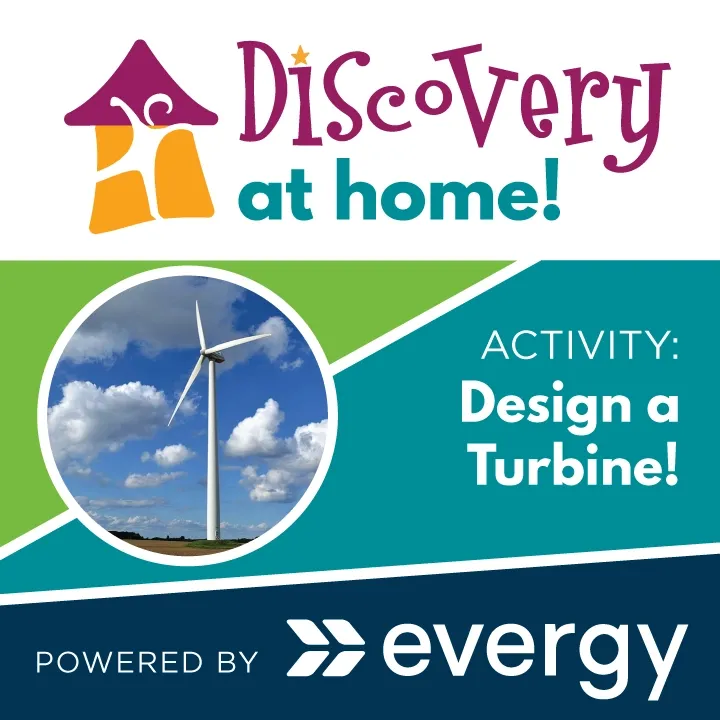Blown away!
Design a wind turbine with Caitlin Luttjohann, Director of STEAM Education at the Kansas Children’s Discovery Center. When kids experiment, they’re learning how to learn. Failure is an important part of experimenting, so let kids try things that won’t work. It’s how they figure things out! This activity is powered by our friends at Evergy.

What you need:
- Paper.
- Tape.
- Scissors.
- Recycled materials.
- Fan.
Directions:
- Create a support structure that includes a rod sticking out away from the structure that will allow the blades to spin around.
- Create a series of blades on one piece of material that would turn like a fan.
- Attach the blades to the support structure ensuring the blades will spin around the rod.
- Make sure you include a feature that will ensure the blades stay on the support structure.
- Turn on and point a fan at the wind turbine. You will know it is successful if the blades turn. The faster the blades turn without this structure being destroyed, the better!
Ways to expand:
- Change the number of blades on your structure and observe the differences.
- Make your structure move an object when the blades move.
- Is there a way to make the blades move without a fan blowing?
- Attach the blades to the elevator pulley project to see if they can assist each other.
What kids learn:
- Basic engineering skills. Engineers solve problems with constraints. They learn to solve problems by using the engineering design process: asking questions, coming up with solutions, building, testing and improving.
Experimentation! When kids experiment, they’re learning how to learn. Failure is an important part of experimenting, so let kids try things that won’t work. It’s how they figure things out!
Vocabulary:
- Constraint. A limitation or restriction. Materials, time, and space are common constraints. Real engineers have to work around constraints all the time!
- Air pressure. The weight of air molecules. Air moves from areas of high pressure to areas of low pressure.
- Force. Energy caused by a push, pull, or gravity.
- Push. An action when you move something away from your body or an object.